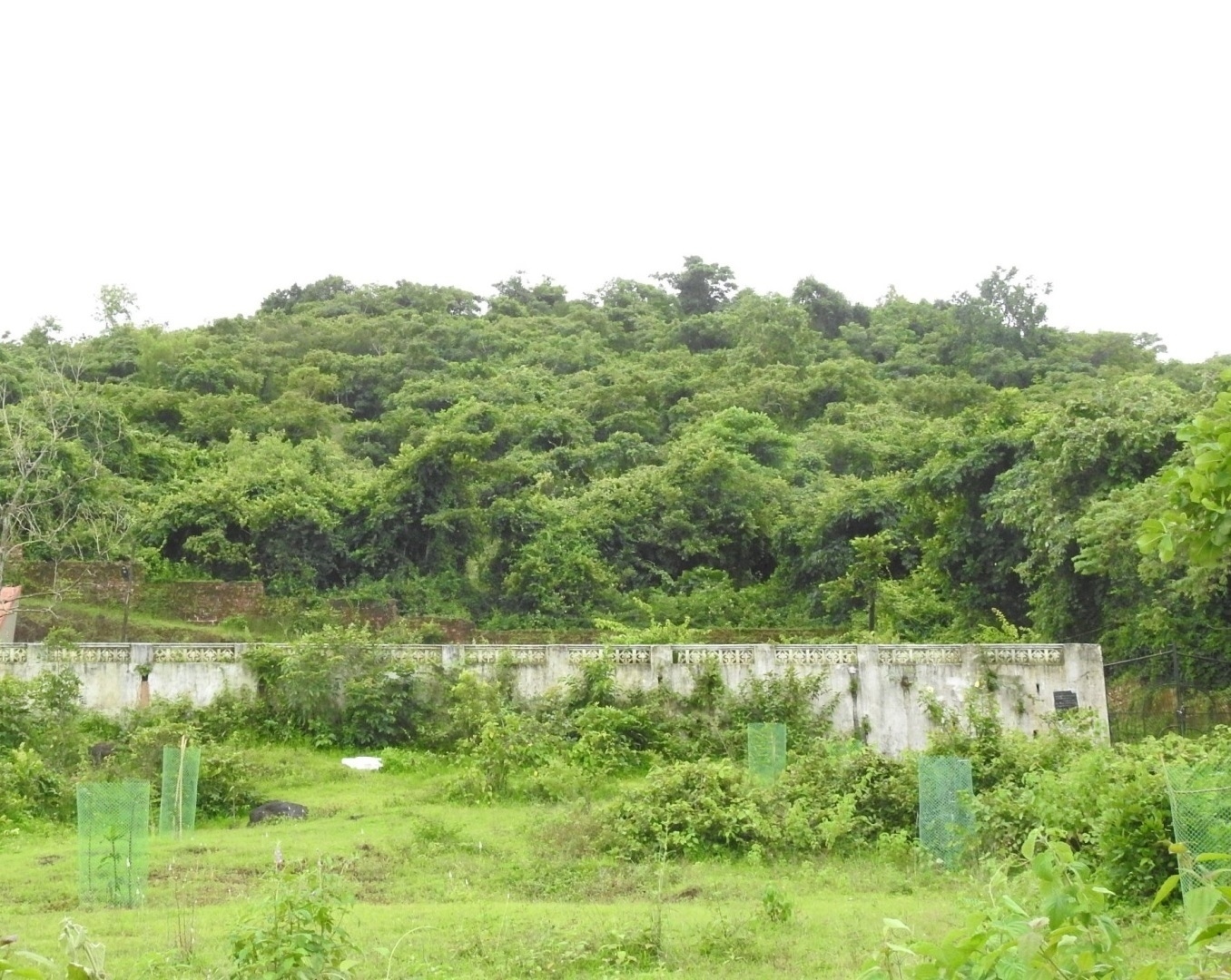Road access breakthrough welcomed, but the majority of the steep plot remains undevelopable

The land acquired for the burial ground at Sonsodo.
Photo Credits: The Goan
MARGAO
Land measuring 30,191 square metres, a sloping plot with a gradient higher than 25 degrees, and having the potential to accommodate hardly 284 graves.
Well, there seems no end to the saga over the land acquired by the Margao Municipal Council (MMC) for the proposed kabrastan (Muslim burial ground) at Sonsodo around 14 years ago in 2011.
Last week’s MMC resolution for swapping of land between the civic body and the Confraria of St Joaquim Chapel, Borda, to ensure a dedicated road to the proposed kabrastan, might help resolve the contentious issue of road access to the proposed burial ground. The resolution might even pave the way for further development of the land acquired for the proposed burial ground.
The same old question, however, may come again to haunt the authorities as well as the stakeholders – the number of graves the plot can accommodate atop the sloping land.
A 2023 report by a consultant appointed by the Goa State Urban Development Agency (GSUDA) revealed that the site can barely accommodate 284 graves due to its steep gradient. The land, measuring 30,191 square metres, has a slope greater than 25 degrees across most of the property. The report confirmed that development is limited under current Town and Country Planning rules and regulations, which prohibit construction on gradients exceeding 25 per cent.
The findings, based on a survey conducted on January 13, 2023, stated that only a portion of the land could be used for burial plots and essential structures, including a prayer room, wazukhana, janaza store, and ghusl area. The rest of the property remains undevelopable unless planning regulations are relaxed.
The ground reality of the acquired land has only thrown up a question or two—whether the MMC verified the nature of the land in question before going ahead with the acquisition. The civic body had already committed a blunder by acquiring the road access to the St Joaquim Chapel cemetery at the time of acquisition. It’s another matter that the Confraria and the Church authorities have resolved to amicably address the issue by swapping land to provide free access to the acquired land for the proposed burial ground.
Says city-based Muslim leader, Abdulmatin Carol, a petitioner before the National Commission for Minorities on the kabrastan matter: “From day one, I had raised my strong reservations to the land acquired at Sonsodo for the proposed kabrastan, since the land has a steep gradient. No one listened to me all these years. It’s only after the GSUDA-appointed consultant certified that the land in question will accommodate only 284 graves that everyone’s eyes opened, that existing TCP rules will not permit full development of the acquired land.”
He added: “Leaders went to town tom-tomming that the civic body has acquired 30,191 square metres of land at Sonsodo to fulfil the long-pending demand for a kabrastan of the Muslim community. Today, we would like to know how it is that a huge plot of land measuring 30,191 square metres will accommodate only 284 graves. Doesn’t that sound surprising? Was no homework done before acquiring the land? And will the government now relax TCP rules for full development of the acquired land?”
---
SGPDA report flagged limited usability of Sonsodo land
MARGAO: A feasibility report prepared by the South Goa Planning and Development Authority (SGPDA) in 2022 had revealed that the majority of the land acquired in Sonsodo for a proposed kabrastan is sloping terrain, with only a limited portion suitable for development.
The 30,191-square-metre plot, located along the road leading to Curtorim and behind the Catholic community cemetery, was acquired by the Margao Municipal Council (MMC) over a decade ago. The report, submitted after the kabrastan project came under judicial scrutiny, outlined significant limitations on the land’s usability due to its topography.
“The majority of the area is sloping land; however, part of the property has a lesser slope,” the SGPDA report stated. It added that development approvals were granted only for areas with permissible gradients, specifically for infrastructure such as a road, toilet facilities, wazukhana, caretaker house, and a prayer room. These approvals were conveyed to the Assistant Engineer of Division VI, Public Works Department (PWD), Margao, in a letter dated February 11, 2016, the report said.